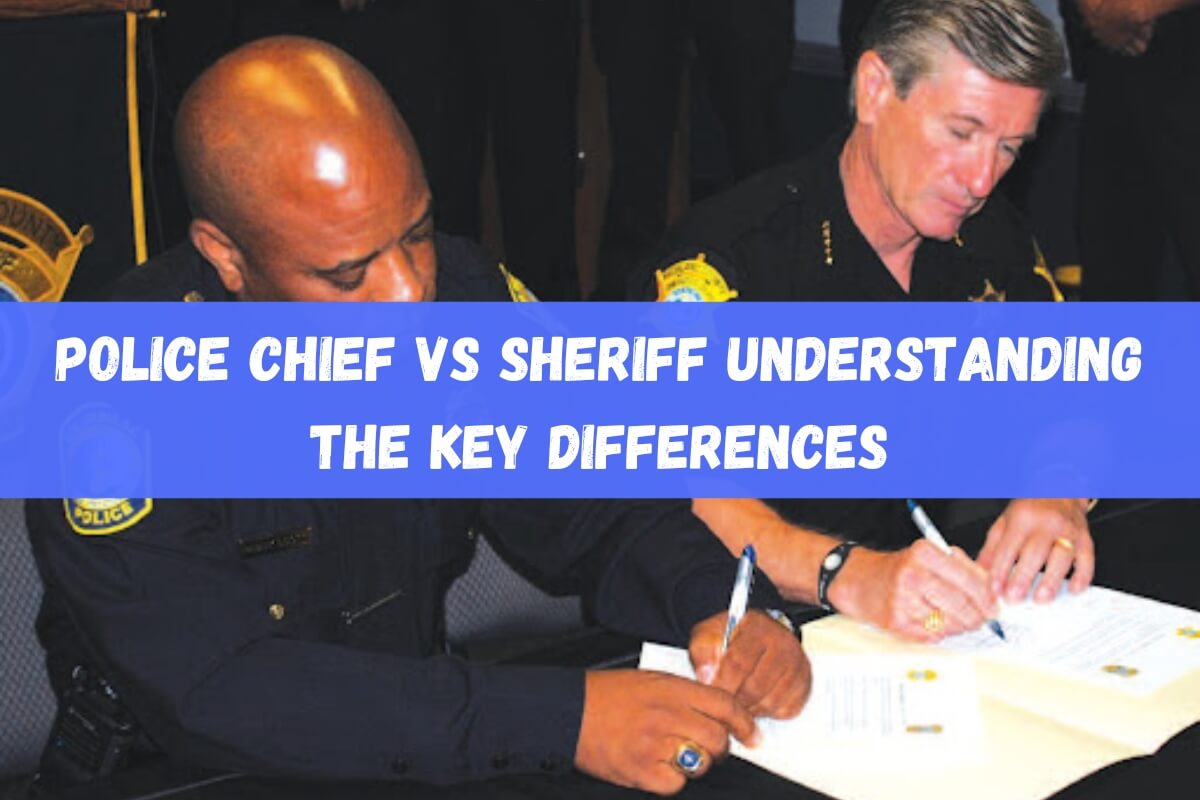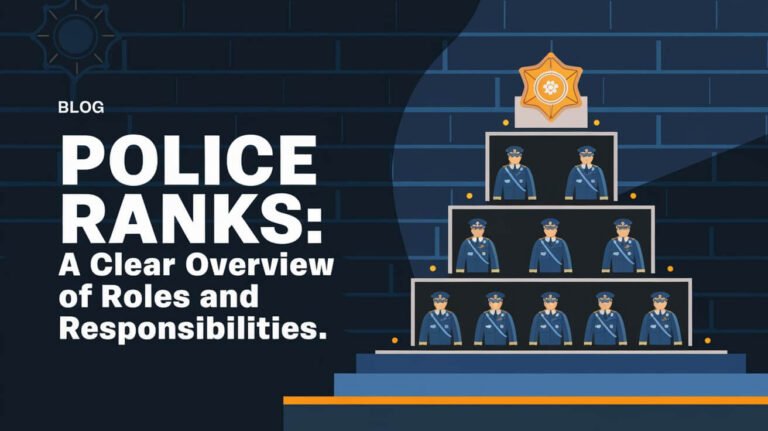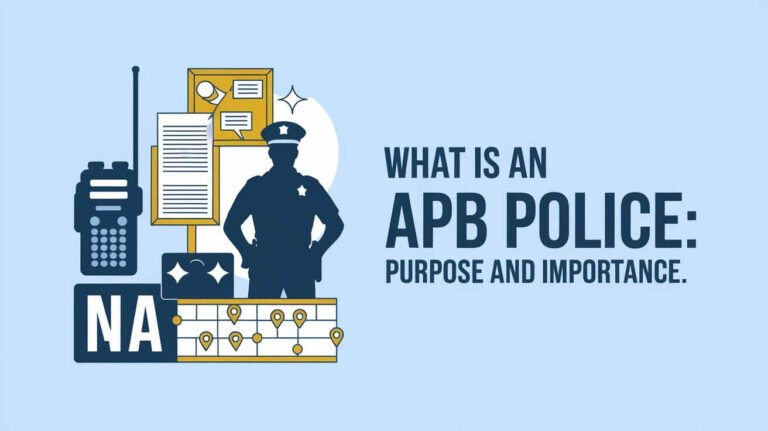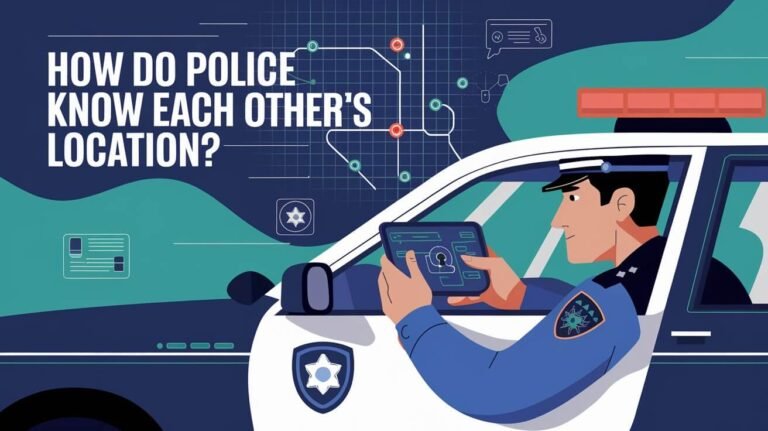Police Chief vs Sheriff: Understanding the Key Differences

When it comes to law enforcement, the terms “police chief” and “sheriff” are often used interchangeably, leading to confusion about their roles and responsibilities. However, there are distinct differences between these two positions that are essential to understand, especially if you’re considering a career in law enforcement or want to be an informed citizen.
So, what is the difference between a police chief and a sheriff?
The primary difference is that a police chief is the highest-ranking officer of a municipal police department appointed by city officials, while a sheriff is an elected county official who oversees law enforcement and other duties across the entire county jurisdiction.
Let’s explore the differences between police chiefs and sheriffs. We’ll look at their areas of authority, how they’re appointed, and their key duties. We’ll also cover related topics like deputy roles, pay, historical background, and more to understand these law enforcement positions better.
What is a Police Chief?
A police chief, also known as a commissioner or superintendent in some jurisdictions, is the highest-ranking officer in a municipal police department. They are appointed by city officials, such as the mayor or city council, to oversee the department’s operations and personnel.
The primary responsibility of a police chief is to ensure public safety and enforce laws within the city or town limits. This includes tasks such as:
- Developing and implementing policies and procedures for the police department
- Managing the department’s budget and resources
- Overseeing crime prevention and law enforcement activities
- Fostering positive relationships with the community through outreach programs
- Collaborating with other law enforcement agencies and emergency services
Police chiefs typically report to the city government and are accountable for the department’s performance and conduct. They work closely with city officials to address public safety concerns and ensure the efficient operation of the police force.
What is a Sheriff?
A sheriff is an elected county official who serves as the chief law enforcement officer within that county’s jurisdiction. Unlike police chiefs, sheriffs are chosen by the residents of the county through a general election process.
The primary responsibilities of a sheriff include:
- Enforcing state laws and maintaining public safety across the entire county, including unincorporated areas and municipalities without their police force
- Operating and managing the county jail system, including inmate supervision and transportation
- Serving legal documents, such as warrants, subpoenas, and civil papers
- Providing court security and acting as bailiffs during court proceedings
- Assisting other law enforcement agencies within the county when necessary
Sheriffs are accountable to the county residents who elected them and are responsible for managing the sheriff’s office, which includes various divisions like patrol, investigations, corrections, and administrative support.
Police Chief vs Sheriff: Key Differences
While both police chiefs and sheriffs play crucial roles in law enforcement and public safety, there are several key differences between these two positions:
Jurisdiction
- Police Chief: A police chief’s jurisdiction is limited to the municipal boundaries of the city or town they serve. Their authority extends only within those city limits.
- Sheriff: A sheriff has jurisdiction over the entire county, including unincorporated areas and municipalities that do not have their police force. This means a sheriff’s authority spans a much larger geographical area.
Appointment/Election
- Police Chief: Police chiefs are appointed by city officials, such as the mayor or city council. They are not elected positions.
- Sheriff: Sheriffs are elected officials chosen by the residents of the county through a general election process, typically held every four years.
Chain of Command
- Police Chief: Police chiefs report to city government officials, such as the mayor or city council, and oversee the operations of the municipal police department.
- Sheriff: As an elected county official, a sheriff is the highest law enforcement authority within the county. The sheriff manages the sheriff’s office and its various divisions.
Duties and Responsibilities
- Police Chief: The primary focus of a police chief is on law enforcement and crime prevention within the city limits. They develop policies, manage resources, and foster community relations.
- Sheriff: In addition to law enforcement duties, sheriffs are responsible for managing county jails, serving legal documents, providing court security, and assisting other agencies within the county.
Key Roles Within Police Departments and Sheriff’s Offices
Both police departments and sheriff’s offices have hierarchical structures with various ranks and positions. Here are some key roles within these organizations:
Deputy Roles
- Deputy Police Chief/Assistant Chief: These positions are second in command to the police chief and assist in overseeing department operations.
- Undersheriff/Chief Deputy/Assistant Sheriff: Similar to deputy police chiefs, these roles support the sheriff in managing the sheriff’s office and its divisions.
Hierarchy and Rank Structure
While specific ranks may vary, most police departments and sheriff’s offices follow a similar hierarchy:
- Sergeant: Supervises a team of officers and oversees specific shifts or units.
- Lieutenant: Manages sergeants and leads larger units or divisions.
- Captain: Oversees lieutenants and commands precincts or specialized units.
- Major/Commander/Inspector: High-ranking officers responsible for overseeing multiple precincts or divisions.
Some departments may also have ranks like a colonel or deputy commissioner for senior leadership positions.
Historical Background
The origins of police departments and the county sheriff system in the United States can be traced back to colonial times and the influence of British policing models.
Police departments emerged in major cities like Boston, New York, and Philadelphia in the early 19th century to address growing concerns about crime and public disorder. These early police forces were modeled after the Metropolitan Police Service established in London in 1829.
The role of the county sheriff, on the other hand, has its roots in the ancient English “shire-reeve” system, where a shire reeve (or sheriff) was responsible for maintaining law and order within a county or shire. This system was brought to the American colonies and evolved into the elected county sheriff positions we have today.
The roles and responsibilities of police chiefs and sheriffs have expanded and adapted to meet the changing needs of their jurisdictions.
Salaries and Budgets
The salaries and budgets for police chiefs and sheriffs can vary significantly based on factors such as the size of the jurisdiction, cost of living, and union contracts.
Police Chief Salaries
According to data from ZipRecruiter, the average annual salary for police chiefs in the United States is $132,158 as of May 2024.
Sheriff Salaries
The average annual salary for sheriffs in the United States is $119,280 as of April 24, 2024, according to the salary.com. Like police chiefs, salaries can vary widely depending on the size of the county and other factors.
Budgets and Funding
City governments typically allocate police department budgets, while sheriff’s office budgets are funded at the county level. These budgets can range from millions to billions of dollars, depending on the jurisdiction’s population, crime rates, and operational needs.
Frequently Asked Questions
Can a sheriff be fired or voted out of office?
While police chiefs can be dismissed or replaced by city officials, sheriffs are elected officials who can only be removed from office through a recall election or by failing to be re-elected at the end of their term. However, in some cases, state laws may allow for the removal of a sheriff under specific circumstances, such as misconduct or criminal charges.
Do police chiefs have arrest powers?
Yes, police chiefs are typically sworn law enforcement officers and have the authority to make arrests within their jurisdiction. However, in practice, they rarely exercise this authority directly and instead manage the police department’s operations and personnel.
Which position has more authority – police chief or sheriff?
Within their respective jurisdictions, both police chiefs and sheriffs hold significant authority as the top law enforcement officials. However, sheriffs are elected county officials and may have broader authority across the entire county, including areas outside municipal limits.
Can you work for both a police department and a sheriff’s office?
In some cases, it may be possible for an individual to work for both a police department and a sheriff’s office, either concurrently or at different points in their career. However, it is more common for law enforcement professionals to specialize in one or the other.
Are there any states without county sheriffs?
While the county sheriff system is prevalent throughout most of the United States, there are a few exceptions:
- Alaska does not have county governments, so there are no county sheriffs.
- In Connecticut, sheriffs have been replaced by a state marshal system.
- Hawaii does not have county sheriffs, but the state’s Department of Public Safety has a Sheriff’s Division.
Brief Summary
The roles of the police chief and sheriff are distinct yet complementary in the law enforcement landscape. While police chiefs oversee municipal police forces, sheriffs are elected county officials responsible for broader jurisdictions. Understanding their differences in appointment processes, chains of command, and areas of responsibility is crucial for communities to ensure effective law enforcement and public safety measures are in place.
Whether you’re interested in pursuing a career in law enforcement or simply want to be an informed citizen, recognizing the distinctions between police chiefs and sheriffs can provide valuable insights into the intricate structure of our criminal justice system. By appreciating the unique roles and jurisdictions of these two positions, we can better understand the distribution of power and accountability within our local and county governments.






